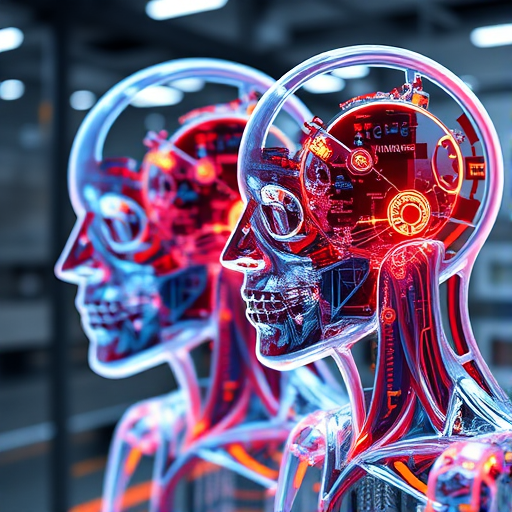The concept of digital twins—virtual representations of physical assets, systems, or processes—has revolutionized engineering and manufacturing industries. By creating digital models that mirror real-world objects or systems, engineers and manufacturers can simulate, analyze, and optimize performance without the risks or costs associated with physical testing. As digital twin technology evolves, its role in enhancing design, manufacturing, and operational processes becomes more significant. Here’s how digital twins are transforming engineering and manufacturing:
1. Design and Prototyping
Digital twins enable engineers to create highly accurate digital models of products during the design phase. These models can simulate how a product will behave under various conditions, such as temperature changes, wear and tear, or different loading scenarios. This helps in refining designs before physical prototypes are created.
- Why it matters: By using digital twins in the design and prototyping phase, manufacturers can reduce time to market, minimize design flaws, and avoid costly physical prototypes. Virtual testing also allows for more innovative and complex designs that would be too expensive or time-consuming to test physically.
2. Predictive Maintenance and Performance Optimization
In manufacturing, digital twins are used to track the performance of machines and systems in real-time. Sensors and IoT devices collect data from physical assets, which is then mirrored in the digital twin. This allows operators to monitor equipment health, predict failures before they happen, and optimize maintenance schedules.
- Why it matters: Predictive maintenance can significantly reduce downtime and repair costs. Manufacturers can proactively address issues, extending the life of equipment and ensuring continuous, efficient production. This predictive capability also leads to smarter decision-making by identifying patterns that suggest when a machine or component will require maintenance.
3. Simulation of Manufacturing Processes
Digital twins enable manufacturers to simulate entire production processes, including assembly lines, material handling, and resource allocation. By analyzing these simulations, engineers can identify inefficiencies, optimize workflows, and reduce waste in the manufacturing process.
- Why it matters: Simulation-based optimization helps improve operational efficiency, leading to faster production cycles, lower costs, and reduced environmental impact. It allows manufacturers to test different production scenarios and identify the most effective strategies for maximizing throughput.
4. Supply Chain Management and Logistics
Digital twins are increasingly being used to optimize supply chains by creating virtual models of inventory, suppliers, and distribution networks. Manufacturers can simulate and track materials as they move through the supply chain, identifying potential disruptions or bottlenecks before they occur.
- Why it matters: With real-time data and simulations, supply chains become more agile and adaptable. This improves decision-making, reduces stockouts, and minimizes lead times, all of which contribute to smoother operations and more reliable product delivery.
5. Product Lifecycle Management
Once a product is manufactured and deployed, digital twins continue to play a role by tracking its performance throughout its lifecycle. Sensors embedded in products can feed data back into their digital twin models, allowing manufacturers to monitor usage patterns, maintenance needs, and wear-and-tear over time.
- Why it matters: Product lifecycle management (PLM) is enhanced by digital twins, enabling manufacturers to extend the life of products, improve product quality, and gather feedback for future designs. Manufacturers can also provide remote diagnostics and support to customers, offering better customer service.
6. Customization and Mass Customization
Digital twin technology facilitates the customization of products at scale. For example, in industries like automotive and aerospace, customers may request specific modifications to products. Digital twins allow for virtual testing and analysis of these customizations to ensure they meet quality standards before physical manufacturing begins.
- Why it matters: By using digital twins to simulate custom designs, manufacturers can provide personalized products more efficiently, without sacrificing quality or incurring high costs. It also enables companies to offer mass customization, where customers can personalize products while still benefiting from mass production techniques.
7. Energy Efficiency and Sustainability
Manufacturers can use digital twins to model energy usage and environmental impact across the entire production process. By simulating different operational scenarios, manufacturers can identify opportunities for reducing energy consumption, lowering emissions, and minimizing waste.
- Why it matters: Digital twins can help manufacturers meet sustainability goals by optimizing resource use and minimizing environmental impact. In industries where energy consumption and waste management are significant concerns, these insights lead to cost savings and align production with environmental standards.
8. Integration with Industry 4.0
Digital twins are a core component of Industry 4.0, which emphasizes smart, interconnected manufacturing systems. By integrating digital twins with other technologies such as IoT, artificial intelligence (AI), machine learning, and robotics, manufacturers can create fully automated and self-optimizing production environments.
- Why it matters: Industry 4.0 technologies enable manufacturers to create highly responsive, adaptive systems that can autonomously make adjustments to improve performance. Digital twins serve as a central hub for data exchange and real-time analysis, ensuring that operations are efficient and effective.
9. Improving Collaboration Across Teams
The use of digital twins fosters greater collaboration between different teams, including design, engineering, manufacturing, and maintenance. Since digital twins provide a common, real-time view of a product or system, all stakeholders can work from the same data, ensuring alignment and improving communication.
- Why it matters: A shared understanding of a product’s design, performance, and manufacturing process helps reduce errors and miscommunication. Collaboration is more effective when all teams are working with up-to-date, accurate data, which leads to faster innovation and problem-solving.
10. Testing and Experimentation Without Risk
Digital twins allow manufacturers to experiment with different configurations, materials, and production methods without the risk and expense associated with physical trials. These virtual simulations make it possible to test out new ideas and innovations before committing to full-scale implementation.
- Why it matters: This reduces the risk of costly mistakes, helps identify potential issues early on, and fosters a culture of experimentation and innovation. Manufacturers can test out multiple variations of a product or process without the financial burden of creating physical prototypes or running physical tests.





